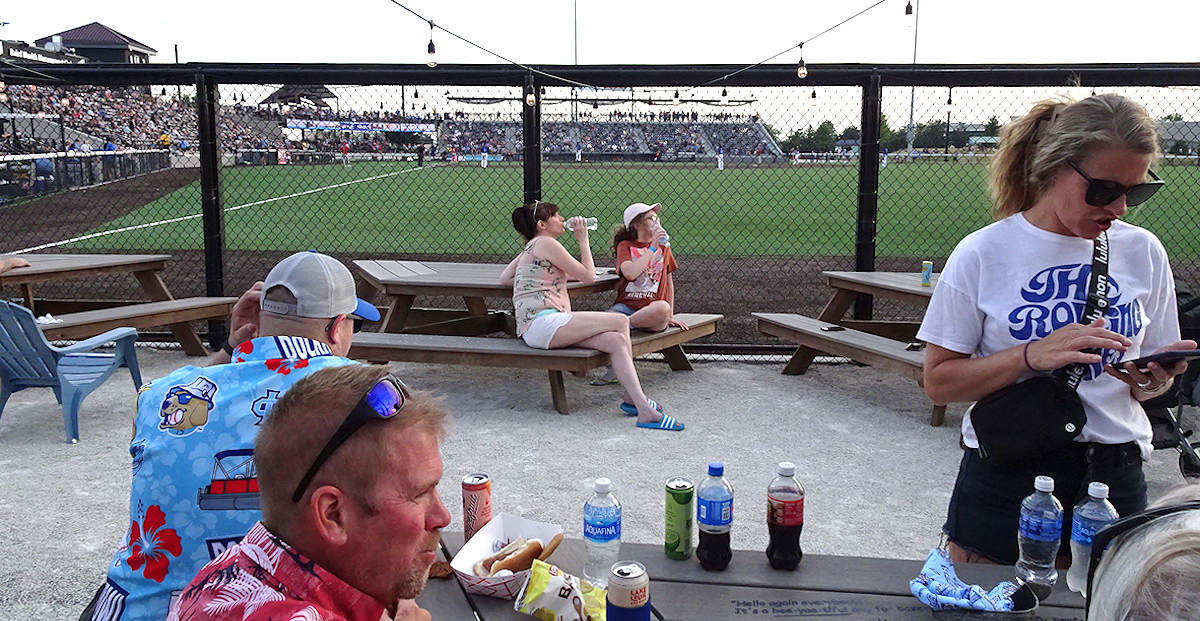
Article and photos by Joe Mock, BaseballParks.com
All rights reserved
OCONOMOWOC, Wisconsin Although few cell-phone cameras were around to capture it for TikTok, many centuries ago, massive glaciers pushed their way across the frozen lands of the Northern Hemisphere.
| Ballpark Stats |
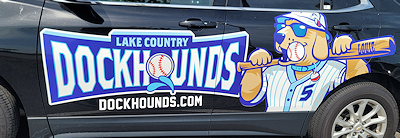 |
| Team: Lake Country DockHounds of the American Association |
| First game: May 20, 2022, an 8-5 win over Winnipeg |
| Capacity: 3,750 — 2,200 fixed seats in seating bowl, 1,550 in suites and group areas |
| Dimensions: LF – 320; CF – 372; RF – 320 Deepest point is RCF at 390 |
| Architect: undisclosed |
| Construction: the owners acted as general contractors |
| Price: Undisclosed (privately funded) |
| Home dugout: 1B side |
| Field points: northeast |
| Playing surface: artificial, made by Shaw |
| Naming rights: Wisconsin Brewing Company of Verona, WI |
| Ticket info: dockhounds.com/tickets |
| Betcha didn’t know: The park was built on land that was once owned by the Pabst family of brewing fame |
The sheet of ice that covered most of Canada and the upper Midwest measured millions of square miles and today is referred to as the Laurentide Ice Sheet. Its southern edge surged southward and retreated back to the north, cutting interesting patterns and depressions into the frozen earth. The most recent period of time this occurred was roughly 75,000 years ago to about 11,000 years ago. Interestingly, geologists refer to this period as the Wisconsin Glacial Episode.
Some of the biggest and deepest depressions left by the ice — and fed by its melting — are now the five Great Lakes. Smaller depressions number in the thousands in what is now Wisconsin and Minnesota. Those we refer to as lakes, with a lower case “L”. In fact, Minnesota likes to refer to itself as the Land of Ten Thousand Lakes.
And although the glaciers are long gone, there’s a modern-day Wisconsin episode happening just west of Milwaukee, in an area lovingly referred to as Lake Country.
The lifestyle embraced by those fortunate enough to spend their summers here even has a name: Lake Country Vibe.
I asked Lisa Kelenic, who with her husband Tom are the managing partners of the Lake Country DockHounds of the American Association, for her definition of this vibe. “I think just laid back, fun, entertaining, and not taking anything too seriously. And relaxing, very much so.
“What’s funny is, all you’ve got to do is say ‘lake country vibe,’ and if you’re from here, people nod their head because they know exactly what it means,” she adds.
Robert Magnus is the mayor of Oconomowoc, Wisconsin, which is ground zero for this vibe. When asked how we would define Lake Country Vibe, he replied “It’s a lifestyle. It’s a fortunate lifestyle that we all live here, because we live where you have so much community engagement.
“It’s the experience of being with each other and enjoying something together.”
Lisa and Tom traveled an intriguing route before becoming interested in professional baseball. Their daughter played softball competitively as she was growing up, ultimately playing in college. Their two sons were just as serious about baseball, so the family spent a lot of time in sports facilities.
They started taking mental notes about the ballpark features they liked and the ones they didn’t. Then they began photographing those features, and organizing them into different categories. They took what they’d learned and started building. First, an outdoor training facility for aspiring baseball and softball players. That was 13 years ago.
“And then we built a 50,000 square foot training center for high school, college (and) professional athletes, whether they play hockey or NFL or MLB,” says Tom. “About five years after that, we built an indoor baseball facility (with a) full indoor field, all netted with eleven cages.
“So that was kind of our passion.” I would certainly say so.
“So I think we’re baseball/softball through and through, and in particular probably here in the state of Wisconsin is our heart.”
| A baseball family |
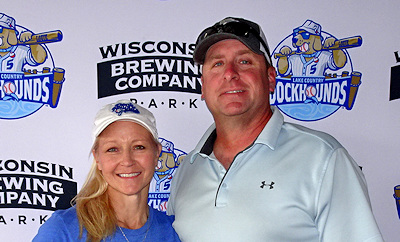 |
| Lisa and Tom Kelenic not only contributed a son to Major League Baseball — Jarred of the Mariners — they’ve built four facilities in Wisconsin where the national pastime is practiced or played. |
Note: since three members of the Kelenic family are referenced in this article, I am attaching their first names to each quote or reference, even though that’s not usually acceptable journalistic style. |
And all of that time spent in baseball parks and constructing training facilities certainly paid dividends, as one of their sons is, oh by the way, a starting outfielder for the Seattle Mariners. I’m confident you’ve heard the name Jarred Kelenic.
Adds his proud mother, “He’s on the All Star ballot, so if you can, please make sure you vote!”
Gladly. And for the record, I did. Repeatedly.
His father explains that he and Lisa started to think about “what’s next. We spent about four or five years trying to identify where and what we wanted to do, whether it was a collegiate stadium or it was a professional stadium. And after interviewing all the different leagues and whatnot, we felt that the American Association was the best fit for not only us, but for the community.”
Although the Kelenics prefer not to dwell on it today — after all, why harp on a couple of batters who struck out when you can heap praise on the hurler who threw a no-hitter? — they pitched their idea for a ballpark to several communities in this area. Published reports say that they approached Pewaukee and Summit, but things didn’t work out.
And then they found Oconomowoc, which like the aforementioned two municipalities, is in Waukesha County. “I think all the traveling around as our kids were playing in all these different ballparks, we had a chance to not only see what made each ballpark unique, but (how) the community supported it,” explains Lisa. “We saw some really great communities, very supportive, really excited. And then we saw some that probably didn’t work as much. And we felt it is the community that can make this thing really welcoming and could embrace it.”
Once the site was pinned down in Oconomowoc and construction started, a name-the-team contest was held. That was the Kelenics’ first clue about the location’s potential. Lisa says they were advised by a marketing firm to anticipate about 150-170 entries.
“We got just under 3000.”
The next clue came when it was time to accept deposits for season tickets for the team’s first year. Again they asked the marketing firm what to expect, and they were told 250. “We did that in less than a week,” Lisa exclaims. “We finished with just under 1,000 people who put money down.”
Those two endeavors let the Kelenics know that this was a community that was going to support the team. It also provided some cash flow as well as a team nickname.
 Regarding the name, Lisa revealed that “DockHounds” wasn’t actually the winner. One young man submitted the name DockDogs, and that was declared the winner. The only problem was that “DockDogs” wasn’t available to trademark. The next best thing was DockHounds, which thankfully was available.
Regarding the name, Lisa revealed that “DockHounds” wasn’t actually the winner. One young man submitted the name DockDogs, and that was declared the winner. The only problem was that “DockDogs” wasn’t available to trademark. The next best thing was DockHounds, which thankfully was available.
Because of their commitment to both the American Association and to the people of Oconomowoc to have a stadium ready for the 2022 season, the Kelenics had to scramble to provide a facility by May 20, 2022. That required a 12-month mad dash to have enough of the construction completed so games could be played on time. When asked what that rushed schedule cost, Lisa replied “A lot!”
The mostly finished stadium opened on time to an overflow crowd of 3,999.
A number of aspects were not in a completed state for the 2022 season. That’s why our in-depth review is happening this year, rather than last, because in 2023 Wisconsin Brewing Company Park is operating on all cylinders.
But why is the park located in the southern tip of Oconomowoc, and how did the design come about? And why in the world don’t we know the identity of the stadium’s architect?
Keep reading as we explain how this complement to the Lake Country Vibe came about.
The Setting
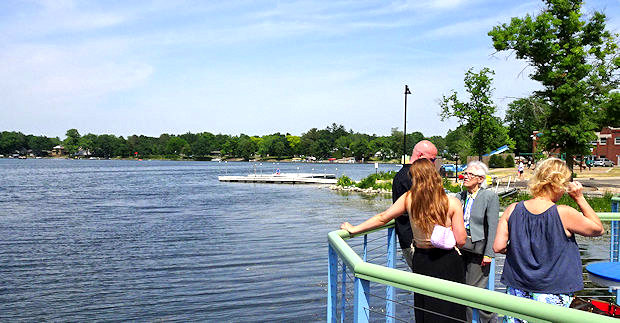
The team’s quaint geographic designation of “Lake Country” might prompt you to think that this is an exceptionally rural part of Wisconsin. While there are vast areas of open prairies and forests — with 31 of its 550 square miles made up of water — square-shaped Waukesha County has a population of about 407,000, 3rd highest in the state. Its largest city is its county seat — also called Waukesha — with 71,000 residents. That’s the 7th biggest city in Wisconsin.
If you come to a DockHounds game, a visit to Waukesha might be in order. There’s a lovely park-like setting along the banks of the Fox River right downtown (below), with adorable eateries and shops close by. The local Historical Society and Museum is worth a visit because there’s an exhibit called the Les Paul Experience, as the legendary inventor of the Gibson Electric Guitar was born here.
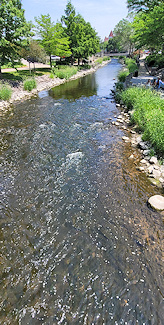 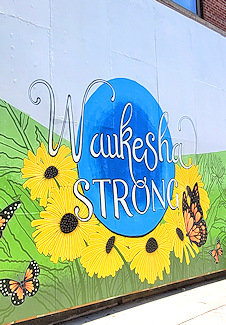 |
Oconomowoc (pronounced “oh-CON-uh-moe-wok”) is to the west of Waukesha. Its name is an Americanized version of the Potawatomi word for “waterfall” — and there is indeed a lot of water there. The downtown of this city of 18,000 skirts along the southern edge of Lake Fowler, the smallish lake in between Lake Oconomowoc and the much larger Lac La Belle.
“Oconomowoc is kind of the jewel of the Lake Country,” says Mayor Magnus. “It has a wonderful small-town feel, but a vibrant downtown where there is always something going on.”
I concur: you simply must spend time downtown, walking along the quaint shops on Wisconsin Avenue. Just a block away is a lovely promenade along the edge of Lake Fowler (the photo at the top of this section was taken here). Just a few steps to the west, past boutiques and eateries, is a sandy area on the edge of Lac La Belle called City Beach.
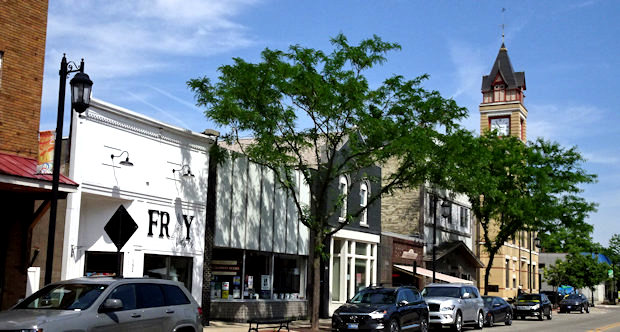
This town is absolutely a picture postcard. Even if there was no baseball here, it would still be a wonderful tourist spot.
And just as Waukesha can claim Les Paul as its native son, Jane Wiedlin of the Go-Go’s was born in Oconomowoc.
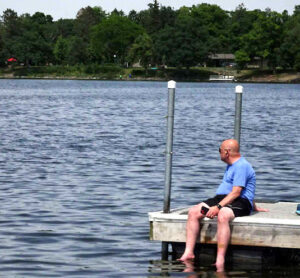 At the center of life here is, of course, the Lake Country Vibe. I think the relaxing gentleman sitting on the dock, dangling his feet in Lake Fowler, exemplifies this more than words ever could.
At the center of life here is, of course, the Lake Country Vibe. I think the relaxing gentleman sitting on the dock, dangling his feet in Lake Fowler, exemplifies this more than words ever could.
Four miles south of downtown on Summit Avenue — since this is Wisconsin, you will indeed pass a Culver’s — is a business park called Pabst Farms Commerce Centre. It’s here where you’ll find Wisconsin Brewery Company Park.
This is an area with a very interesting history.
Frederick Pabst, Jr. — from one of several famous brewing families who hail from Wisconsin — bought this land in 1906. The family eventually acquired 1,500 acres, farming it and raising dairy cattle and horses.
Two decades ago, the farm was acquired. The developer, Peter Paul Bell, has plans for 1,200 residences as well as hotels, commercial and shopping areas — much of which is already complete. Over 20% of the land will be preserved as open spaces and parks.
 Much of this area used to be in the town of Summit, just to the southeast of Oconomowoc. In 2010, the town brought a proposal to Oconomowoc to trade certain parcels of land, as part of Summit changing its designation from a “town” to a “village.” Included in the area that went from Summit to Oconomowoc is today the Pabst Farms Commerce Center, where WBC Park is located.
Much of this area used to be in the town of Summit, just to the southeast of Oconomowoc. In 2010, the town brought a proposal to Oconomowoc to trade certain parcels of land, as part of Summit changing its designation from a “town” to a “village.” Included in the area that went from Summit to Oconomowoc is today the Pabst Farms Commerce Center, where WBC Park is located.
This parcel is bordered on the north by Interstate 94 — which is the link between Milwaukee and Madison — and on the east by State Highway 67. In fact, the interchange where these two highways intersect is only a couple of hundred feet from the ballpark’s right field. The street making a big loop through this business park is Blue Ribbon Circle North, named for the beer brewed by Pabst.
The ballpark sits in the northeast corner of this business park, between Wisconsin Harley Davidson and Ace Precision, a machining company.
While being wonderfully accessible, Wisconsin Brewing Company Park isn’t as visible from the Interstate as would be ideal. That’s because the light towers aren’t exceptionally tall because of the high-efficiency LED lighting that is utilized.
“I think our location is huge,” says Tom. “We felt we needed to be very accessible in and out, and we needed to have a community that was going to accept us and take us down the right path.
“We found that here for sure.”
It’s a good thing the glaciers got out of the way so the Vibe could move in and WBC Park could be built!
The Exterior
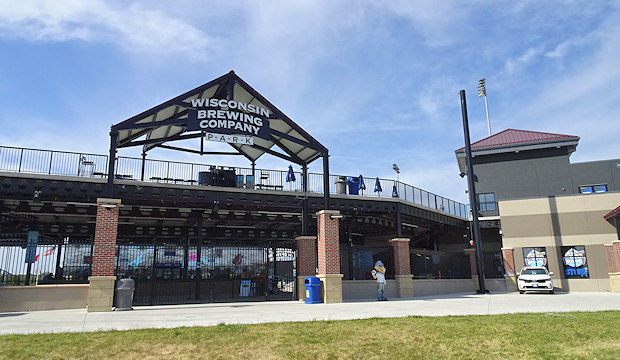
There are a number of ways that Wisconsin Brewing Company Park is different than your typical minor league stadium. The exterior is one example.
When you look at the view of the outside of the park behind third base, and compare it to a photo of the exterior behind first base, you’d think you were looking at two different places where sports are played — one for baseball and one for basketball.
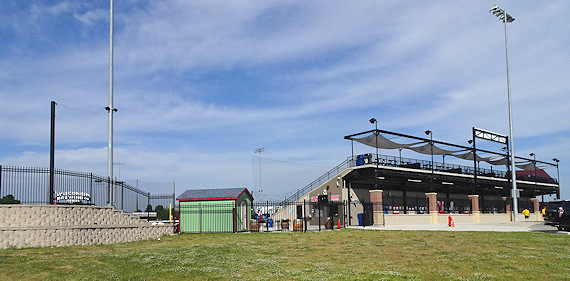
On the left-field side is a small parking lot (mostly for staff and players) adjacent to iron fencing with masonry pillars acting as the perimeter of the ballpark. This fencing extends to the main gates directly behind home plate, and around the first-base side for another 75 feet.
This is where the ballpark’s exterior changes drastically. A 27,000-square-foot, two-story building forms the boundary of the ballpark on the first-base side. More on what’s inside the building when we discuss the park’s interior, since the majority of the space is for baseball operations.

Farther down the first-base side of the park — on the far side of the two-story building — is a gate used for getting equipment into and out of the stadium.
The concourse doesn’t wrap 360 degrees around the field. Consequently there is nothing for fans to see on the outside of the outfield wall — except for a group area called The Beach beyond the right-field wall near the foul pole. Fans there actually look through the fencing making up the outfield wall. This area is shown in the photo at the very top of this page of the review.
Keep reading as we venture inside Wisconsin Brewing Company Park … and discuss the affordability and gameday experience at a DockHounds game.